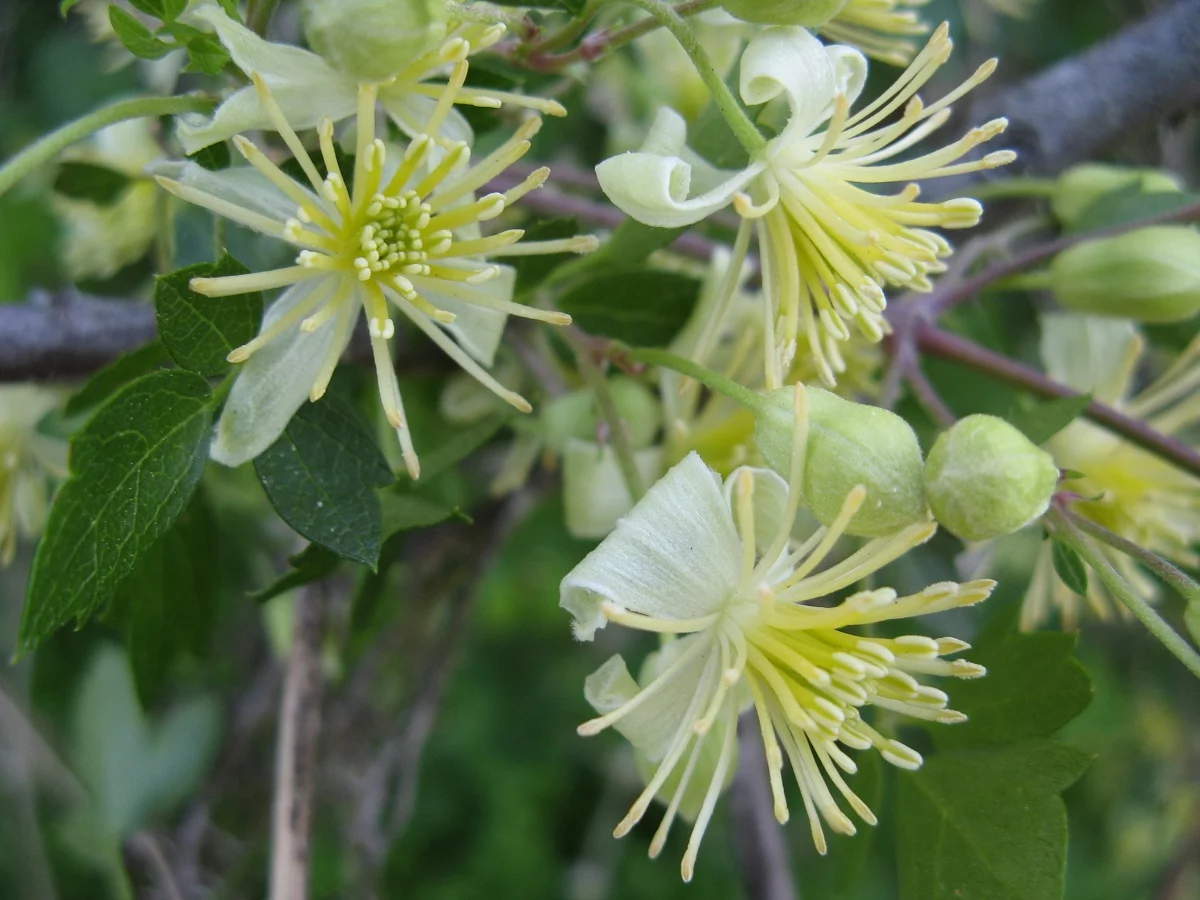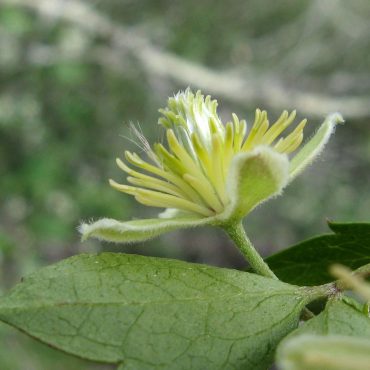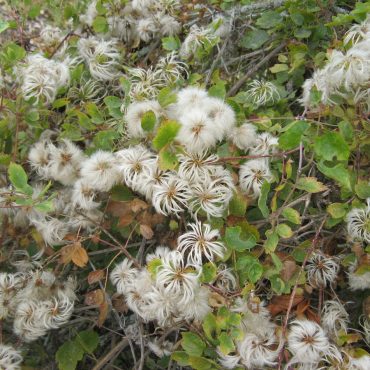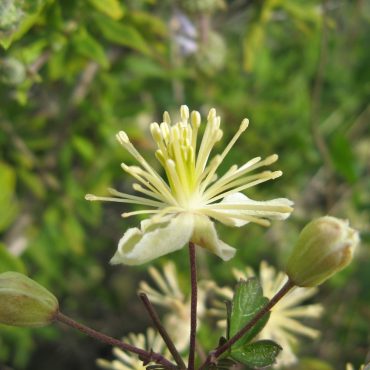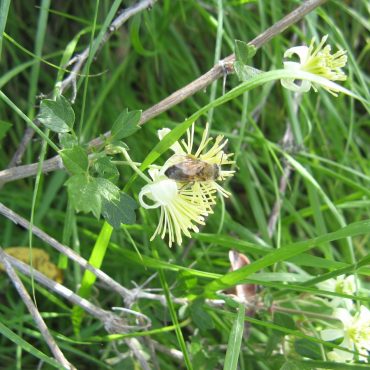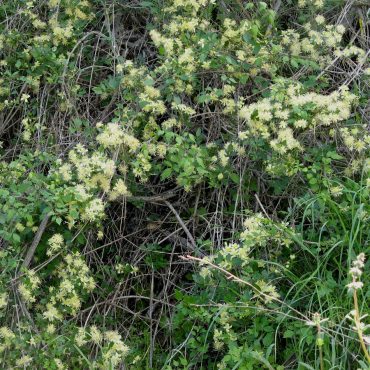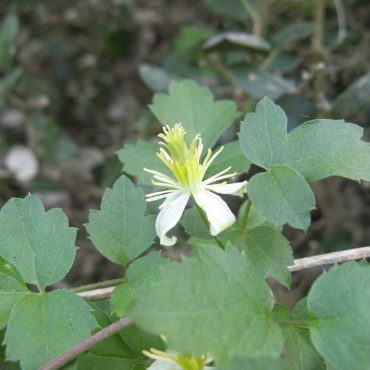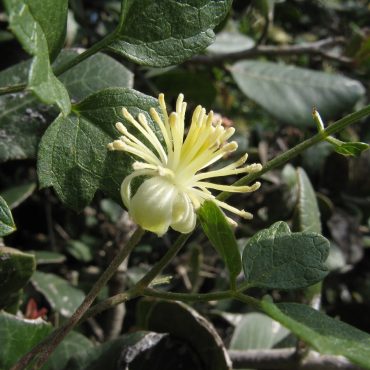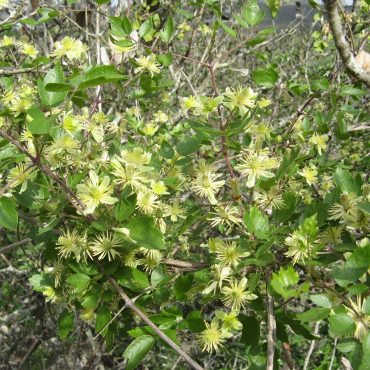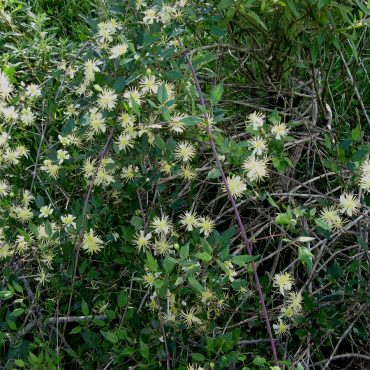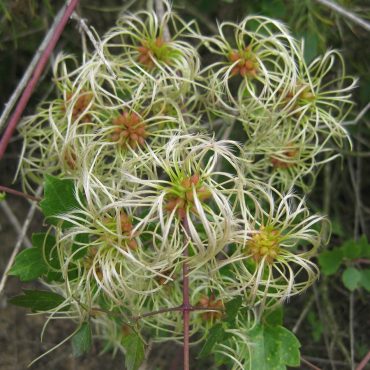Description
2,59
Our native clematis (ropevine clematis or virgin’s bower) is a perennial woody vine 6-12 feet (2-4 meters) in length that uses sturdy shrubs of the chaparral and sage scrub for support. Leaves are opposite, pinnately compound, composed of 3 to 5 leaflets. Leaflets are generally lobed and toothed. Vines cling to their support by means of the leaf petioles that coil around supporting branches.
Flowers are either male or female. According to the literature, both may be found on the same plant, but our plants (those that we have examined) tend to be unisexual. Male and female flowers are very similar in appearance. Flowers are white or cream-colored, occasionally buttery-yellow. They are 1/4 – 1/2 inches (0.5 to 1.5 cm) across and are born in clusters of one to three on stalks from the leaf axils. Petals are absent and sepals assume the appearance of petals. There are four (sometimes five or six) sepals, radially arranged. Older sepals curl under and soon drop. Most of the flower consists of a spray of up to 50 stamens or pistils. In a female flower, the column of pistils emerges from a ring of stamens which appear to be infertile (but we could not confirm this). Peak bloom time is January – June.1
Flowers are attractive, but the show starts when the seeds develop. Each seed is attached to a long, curved, feathery tail. Together they turn ripe seed clusters into soft, fluffy globes.

